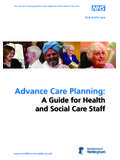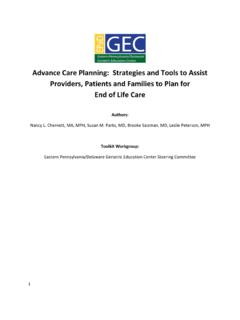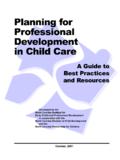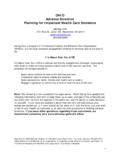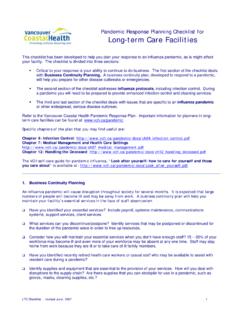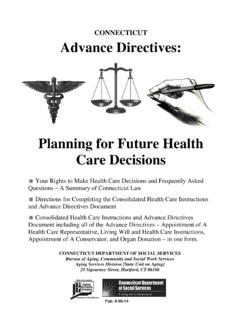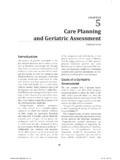Transcription of healing satisfying choice non-institutionalcaring …
1 Quality of lifeinclusivesatisfyingmeaningfulsupport ivenon-institutionalhealingcaringcourtes ycomfortchoicedignityrespectprivacycontr olengagementcommunityquality of lifeinclusivesatisfyingmeaningfulsupport ivenon-institutionalhealingcaringcourtes ycomfortchoicedignityrespectprivacycontr olengagementcommunityquality of lifeinclusivesatisfyingmeaningfulsupport ivenon-institutionalhealingcaringcourtes ycomfortchoicedignityrespectprivacycontr olengagementcommunityA Process for care planning Resident ChoiceROTHSCHILD PERSON-CENTERED care planning TASK FORCEforPrepared by:Margaret CalkinsKaren SchoenemanJennifer BrushRobert MayerFebruary 20152 TABLE OF CONTENTS 2015 The Hulda B. & Maurice L. Rothschild Foundationquality of lifeinclusivesatisfyingmeaningfulsupport ivenon-institutionalhealingcaringcourtes ycomfortchoicedignityrespectprivacycontr olengagementcommunityquality of lifeinclusivesatisfyingmeaningfulsupport ivenon-institutionalhealingcaringcourtes ycomfortchoicedignityrespectprivacycontr olengagementcommunityA Process for care planning Resident ChoiceROTHSCHILD PERSON-CENTERED care planning TASK FORCEforTable of ConTenTs1.
2 Background 32. overview of Process for care planning for Resident choice 143. Process for care planning for Resident choice 174. sample Documentation forms for Honoring Resident choice and Mitigating Risk 235. blank Documentation form 316. Task force Members 333 BACKGROUND 2015 The Hulda B. & Maurice L. Rothschild FoundationbaCkgRounDFor many years, care communities have been saying that they cannot implement at least some elements of person-centered care because of fear that they will get cited by the surveyors if there is a negative outcome that might be attributed to those policies or practices, or possibly get sued by the resident s family. This is primarily because a number of person-centered practices, such as offering residents mean-ingful choices and honoring their decisions, represent significant deviations from prior accepted more paternalistic institution-centered practice.
3 Examples abound, but include such issues as supporting the resident s wish to eat food that might be considered a choking hazard; wanting to not be tied to an alarm despite being at risk for falling; or wanting to go outside without a caregiver. To respond to these concerns, the Erickson School, with support from the Rothschild Foundation, convened an invitational symposium in the fall of 2012 on Surplus Safety. Almost 50 stakeholders from a diverse group of constituencies discussed the unbalanced notions of risk in long-term care , in which caregivers generally only take into consideration the potential negative consequences of a resident s choice , and do not sufficiently consider possible positive consequences or upside risk. In the healthcare arena, safety particularly physical safety and health has generally been more highly valued than the positive psychological and emotional state that results from being able to choose to engage in preferred behaviors or activities which may have some level of risk attached.
4 Following the Surplus Safety Symposium, the Rothschild Foundation convened another meeting, in April 2013, of primarily elder law experts. A Legal Liabilities Task Force was formed to address more specific strategies that would help care communities, who are actively working to respect resident rights in the promotion of self-determination and personal decision-making, avoid potential litigation if the resident chooses to make a decision that results in unintentional harm. The Task Force consisted of various care community and professional stake-holders, including several representatives from the legal community. Based in part on the discussions held at the Surplus Safety Symposium, it was the belief of the Foundation that the proper way to navigate this barrier to resident choice was to formulate some type of legal remedy, potentially through changes in existing statutes, a negotiated risk agreement, waivers, etc.
5 The Task Force members disagreed. Rather than a legal remedy, it was the consensus of this group that the answer was in care communities themselves. In particular, care communities need to follow the requirements embedded in CMS regulations for resident education, the offering of alternatives that are less risky through the care planning process, and documen-tation of the processes that were followed. These regulations form the foundation for evaluating the standard of care that is provided, and if the care meets these standards, then the care community should not be held liable for negative outcomes. The challenge is that the regulations are not clear on what, exactly, constitutes an acceptable standard of care when resident preferences are not aligned with Background4 BACKGROUND 2015 The Hulda B. & Maurice L. Rothschild Foundationprofessional recommendations. The Task Force recommended a uniform set of care planning policies and procedures to help surveyors, lawyers, families and care communities create care plans which would serve to recognize that the responsibility to respect resident rights for self-determination are at least equal to the responsibility for resident safety.
6 Following the Legal Liabilities Task Force recommendations, we renamed this advisory group the Person-Centered care planning Task Force. It is our expectation that by better understanding the real and perceived barriers to person-centered care , we can do a better job of building new approaches to begin to eliminate such oveRviewThe federal emphasis on the importance of quality of life and resident autonomy and choice began with the release in 1986 of Improving the Quality of care in Nursing Homes, a blue ribbon panel Institute of Medicine report to Congress1. This key report, which led directly to the language of the Nursing Home Reform section of the Omnibus Budget Reconciliation Act of 1987 (commonly called OBRA 87), recommended significant changes to current regulations, including new sections on Resident Rights, Quality of Life, Resident Assessment, and Quality of care . The report specifically supported the resident s right of refusal of treatment and choices over matters of importance, as well as participation in developing one s own plan of care .
7 One key conclusion stated, Because most nursing home residents live in nursing homes for many months or years, quality of life is as important as quality of care in these institutions. (p. 21)1 From Improving the Quality of Nursing Homes: In May 1982, the Health care Financing Administration (HCFA) announced a proposal to change some of the regulations governing the process of certifying the eligibility of nursing homes to receive payment under the Medicare and Medicaid programs. The changes were responsive to providers complaints about the unreasonable rigidity of some of the requirements. The proposed changes would have eased the annual inspection and certification requirements for facilities with a good record of compliance, and would have authorized states, if they so wished, to accept accreditation of nursing homes by the Joint Commission on Accreditation of Healthcare Organizations (JCAHO) in lieu of state inspection as a basis for certifying that Skilled Nursing Facilities (SNFs) and Intermediate care Facilities (ICFs) are in compliance with the federal conditions of participation and operating standards.
8 The HCFA proposal was strongly opposed by consumer groups and most state regulatory agencies because the proposed changes were seen as a movement in the wrong direction that is, towards easing the stringency of nursing home regulation and because they did not deal with the fundamental weaknesses of the regulatory system. The controversy generated by the proposal caused Congress in the fall of 1982 to order the HCFA to defer implementing the proposed changes until August 1983 and ultimately resulted in a HCFA request to the Institute of Medicine (IOM) of the National Academy of Sciences to undertake this study. The contract between the HCFA and the IOM became effective on October 1, 1983. The charge to the IOM Committee on Nursing Home Regulation was to undertake a study that would serve as a basis for adjusting federal (and state) policies and regulations governing the certification of nursing homes so as to make those policies and regulations as appropriate and effective as possible.
9 The full report can be downloaded from BACKGROUND 2015 The Hulda B. & Maurice L. Rothschild FoundationCongress tasked the Health care Financing Administration (now the Centers for Medicare & Medicaid Services CMS) with developing person-centered and outcome oriented regulations, regulatory guidance, and a new survey process to focus on resident outcomes in terms of both Quality of Life/Resident Rights and Quality of care . CMS released the regulations in 1989 (42 CFR, Part 483) and the regulatory guidance and survey process in 1990. The status quo of the nursing home field at that time was largely that of a traditional, medical model of institutional care . So, the regulators (surveyors) interpreted the important choice and rights regulatory language embedded in OBRA in terms of a traditional medical model where the resident is expected to follow the advice of the healthcare professional, regardless of personal preference. Although the regulations mandated rights and choices, there were also regulatory Quality of care mandates for good care , assessing each resident, and care planning for services needed by each resident to attain and maintain their highest practicable well-being.
10 Although both the law and regulations placed equal emphasis on both Quality of Life and Quality of care , in practice, both providers and surveyors often assumed that any resident choices to refuse aspects of care or to engage in perceived risky behaviors were not only less important to address but simply wrong. It was the responsibility of the staff to know what was best for each resident. So, for example, if a resident wanted to refuse a pill, staff often felt a responsibility to cajole the resident into acceptance or even hide the pill in apple sauce, and surveyors often agreed with this approach. Resident choices were viewed as acceptable as long as they were good choices that did not conflict with practice and policy for good care , as determined by staff. This approach is reinforced by the Resident Assessment instrument process (described in greater detail below), which assesses resident function (or more accurately dysfunction) and prescribes a process to identify steps to help the resident achieve his or her highest practicable level of well-being.
